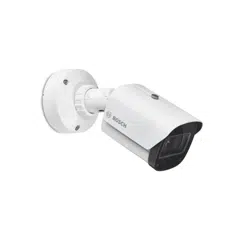Loading ...
Loading ...
Loading ...

24 en | Configuration DINION 7100i IR
2023-06 | V02 | F.01U.390.686
User manual
Bosch Security Systems B.V.
4.4.3 Positioning
The Positioning feature describes the location of the camera and the perspective in the
camera’s field of view.
Perspective information is essential to Video Analytics, as it enables the system to compensate
for the illusory smallness of distant objects.
Only through use of perspective information is it possible to distinguish objects such as
persons, bicycles, cars and trucks, and accurately compute their real size and speeds as they
move through 3D space.
However, to calculate perspective information accurately, the camera must be directed at a
single, flat horizontal plane. Multiple and inclined planes, hills, stairs can falsify perspective
information and produce incorrect object information such as size and speed.
Mounting position
The mounting position describes the perspective information that is also often called
calibration.
In general, the mounting position is determined by the parameters of the camera such as
height, roll angle, tilt angle, and focal length.
The height of the camera must always be entered manually. Whenever possible, roll angle and
tilt angle are provided by the camera itself. The focal length is provided, if the camera has a
built-in lens.
Tilt angle [°]
Enter the tilt angle if the value is not determined by the camera.
The tilt angle describes the angle between the horizontal and the camera.
A tilt angle of 0° means that the camera is mounted parallel to the ground.
A tilt angle of 90° means that the camera is mounted vertically in bird’s eye view perspective.
The flatter the tilt angle is set, the less accurate the estimate of object sizes and speeds will
be. The settings must be between 0° and 90°. Estimates are no longer possible when you have
reached 0°.
Roll angle [°]
Enter the roll angle if the value is not determined by the camera.
The roll angle describes the angle between the roll axis and the horizontal plane. The angle
can deviate from the horizontal by up to 45°.
Height [m]
Enter the height in meters of the position of the camera.
The height describes the vertical distance from the camera to the ground plane of the
captured image. Typically the elevation of the mounted camera above the ground.
Focal length [mm]
Enter the focal length in millimeters of the position of the camera if the value is not
determined by the camera.
The focal length is determined by the lens. The shorter the focal length, the wider the field of
view. The longer the focal length, the narrower the field of view and the higher the
magnification.
Show sensor values...
Click to automatically see the camera parameters, for example, Tilt angle [°], Roll angle [°]
and Focal length [mm]. These calibration values are measured by the device sensors. Click OK
to transfer them to the Positioning settings page.
Sketch
Click to improve the automatic calibration. The Sketch-based calibration window is displayed.
Loading ...
Loading ...
Loading ...
